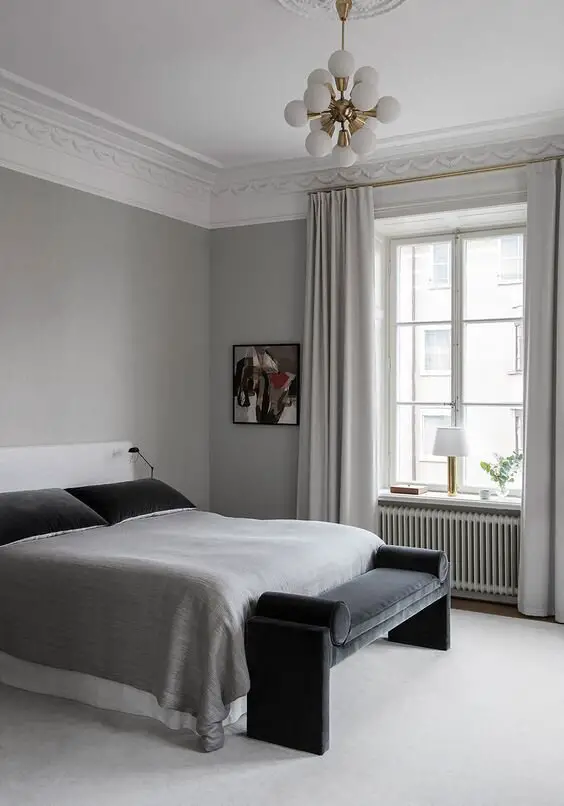
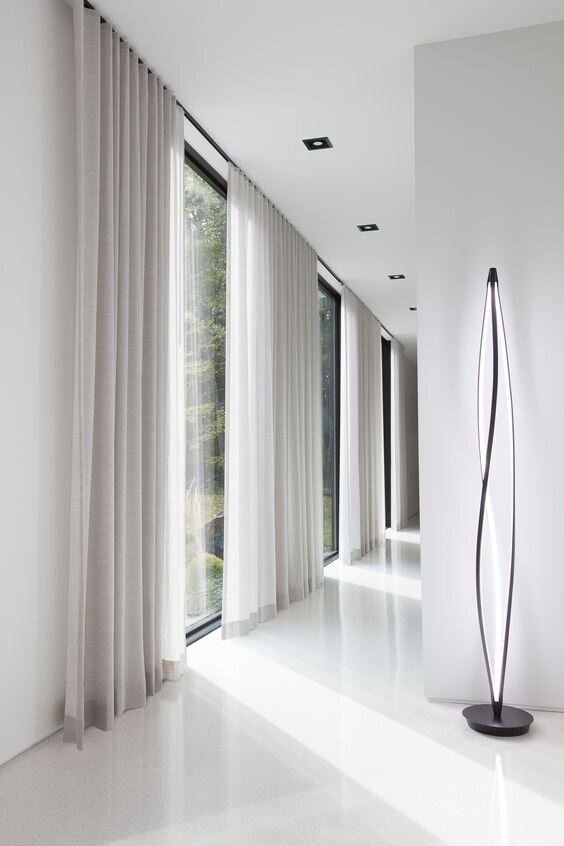
Images via H&M & The Shade Store
I recently heard someone compare furniture to makeup, and how the curtains are like the mascara…the finishing touch that makes everything look complete. And it couldn’t be any more true!
But before we can apply the mascara…aka the curtains… there are so many different options to consider. I’m sure that’s why you’re reading this in the first place, right?
So, let’s simplify things and get into the different types and styles of curtains and drapes. Now, to be fair, we’re talking about floor length curtains, and truly, the only differentiating factor is the top portion of the curtain, called the heading. So let’s get into the five different styles of curtains and drapes.
The 5 Styles Of Curtains & Draperies (tops & headings)
- Tap top
- Rod/ Pole pocket
- Pleated (tailored pleat, pinch pleat, inverted pleat, box pleat)
- Grommet
- Ripplefold
They each have their pros and cons, and so let’s break down each style and figure out which one will be best to fit your needs!
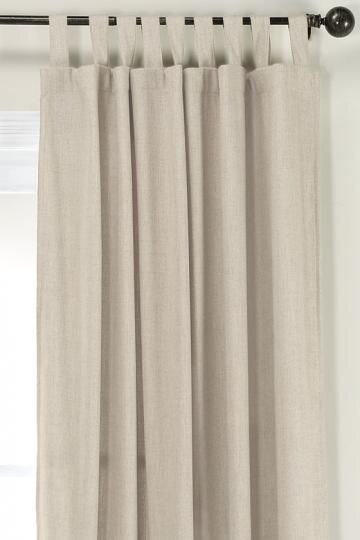
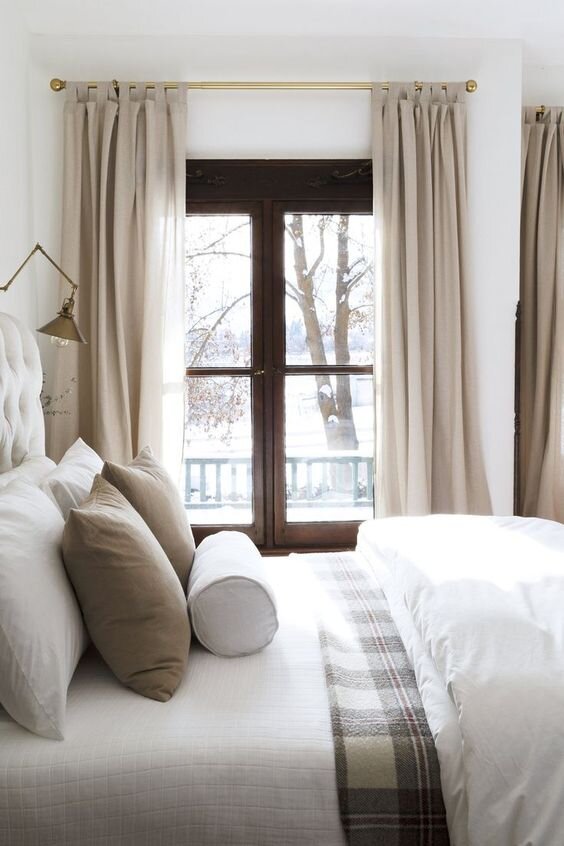
Images via Wayfair & The Grit & Polish
1. Tab Top Curtains
These tab-top curtains are as simple and basic as it gets! They have a very informal and casual feel, and in my opinion, they should be reserved for those casual rooms… like a children’s room or nursery.
PROS OF TAB TOP CURTAINS
- Provides a casual look: Tab top curtains have a relaxed and casual look that can add a cozy touch to any room.
- Easy to slide: Tab top curtains slide easily along the curtain rod, making them easy to open and close.
- Works well with lightweight fabrics: Tab top curtains work well with lightweight fabrics, such as linen or cotton, that drape well and create a flowy effect.
- Easy to install: Tab top curtains are easy to install and do not require special hardware or expertise.
- Inexpensive: Tab top curtains are typically less expensive than other curtain styles.
CONS OF TAB TOP CURTAINS
Dated-looking, too casual for most rooms.
- limited insulation: Tab top curtains may not provide as much insulation as other types of curtains, as they do not typically have a lining or heavy fabric.
- Limited privacy control: Tab top curtains may not provide as much privacy as other types of curtains, as the tabs can create gaps between the fabric panels.
- Tabs may wear out: The tabs on tab top curtains may wear out over time, especially if the curtains are frequently opened and closed.
- Dated: These tap-top curtains should be saved for children’s rooms and nurseries Unless you’re going to a very beachy vibe in your home, I’d stay away from this style of curtain.
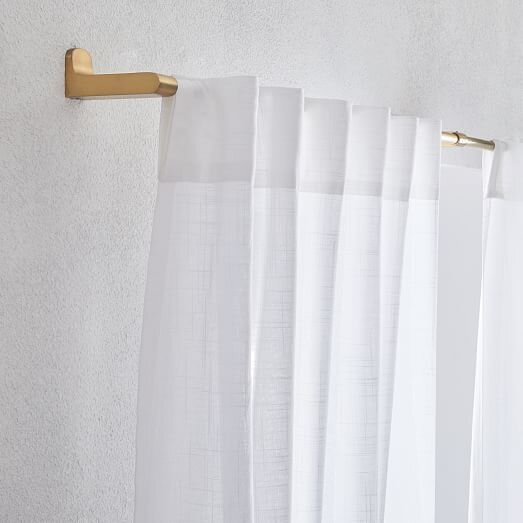
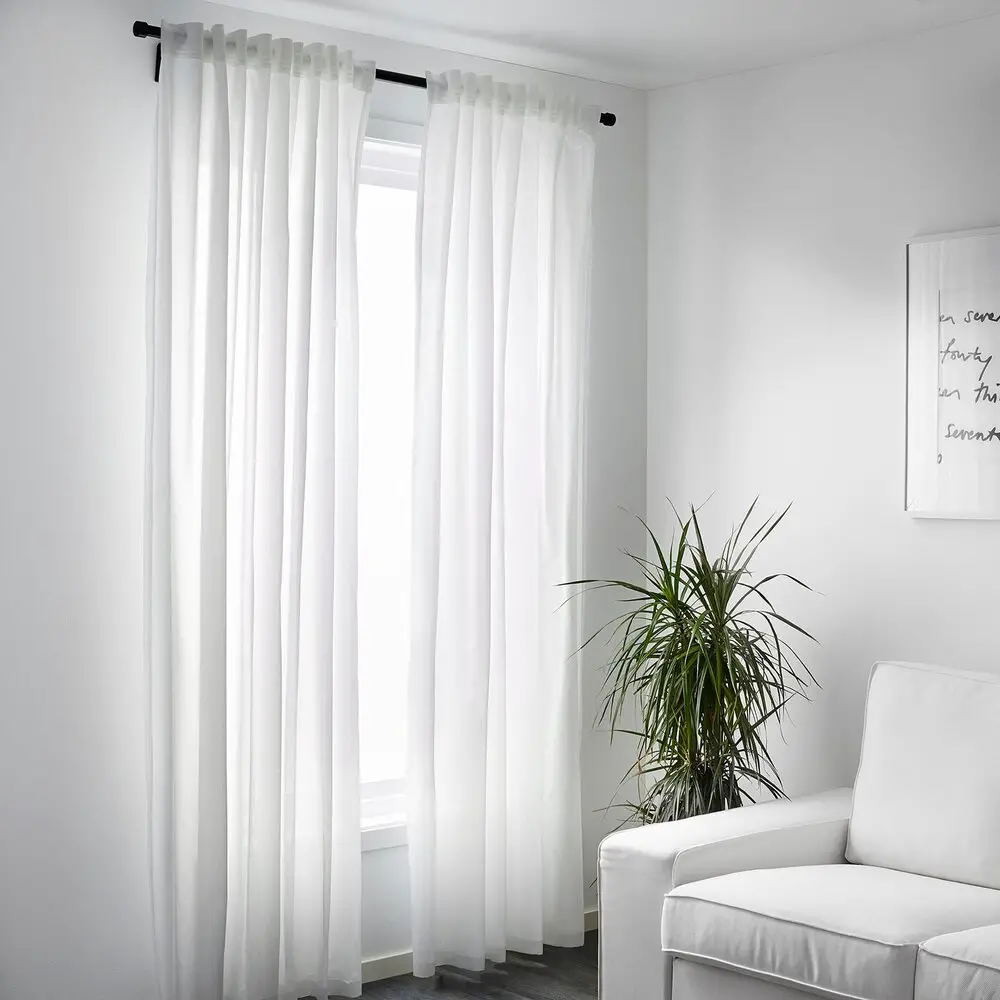
2. Pole & Rod Pocket Curtains
Rod pocket curtains have a slot at the top (or backside, depending on the style) for the rod to slide into. These styles are almost impossible to open and close, so avoid them at all costs unless it’s for decorative purposes only.
On the other hand, some high-end curtains have loops sewn on the back, so you can hang them with clips and rings. The metal rings will make sliding the curtains across the rod so much easier!
PROS OF ROD & POLE POCKET CURTAINS:
- Easy to install: Rod pocket curtains are easy to install as they simply slide onto a curtain rod, making them a popular option for DIY projects.
- Simple and casual look: They have a simple and casual look, making them suitable for a range of interior design styles.
- Affordable: Rod pocket curtains are typically an affordable option compared to other types of curtains.
- Work well with lightweight fabrics: They work well with lightweight fabrics, such as cotton or linen, which can add a soft, breezy feel to a room.
CONS OF ROD & POLE POCKET CURTAINS:
- Difficult to adjust: Rod pocket curtains tend to bunch up and can be difficult to adjust, making them less ideal for those who want to be able to easily open and close their curtains.
- Lack of fullness: Because rod pocket curtains do not have pleats, they tend to lack the fullness and depth that other types of curtains can provide.
- May not work with heavier fabrics: Rod pocket curtains may not work well with heavier fabrics, as the weight of the fabric can cause the curtains to sag or droop over time.
- Limited light control: Rod pocket curtains do not offer much light control, as they cannot be easily adjusted to control the amount of light entering a room.
SHOP POLE & ROD POCKET CURTAINS
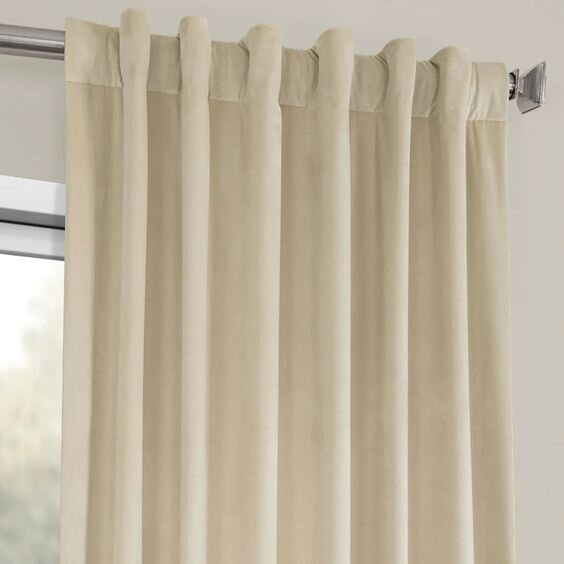
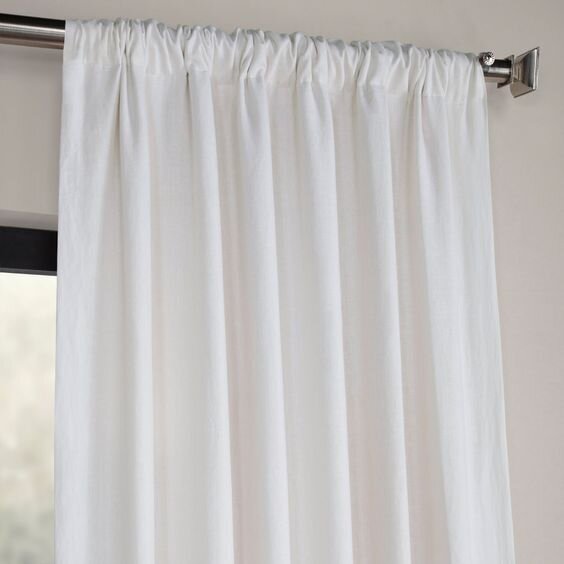
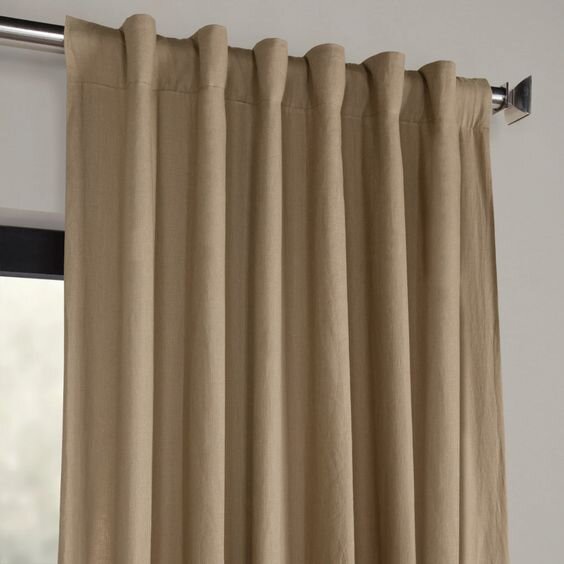
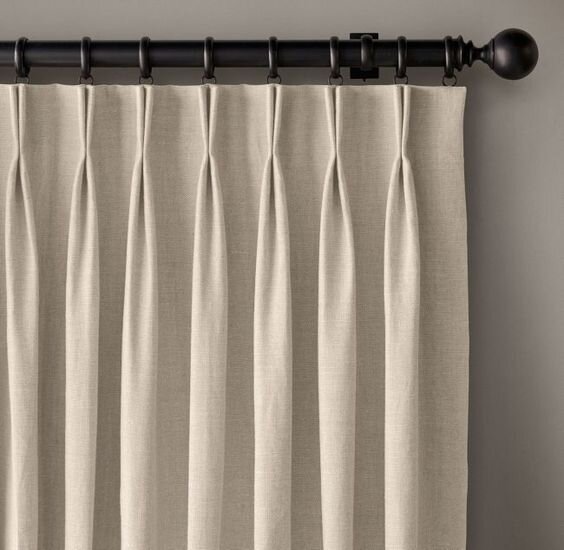
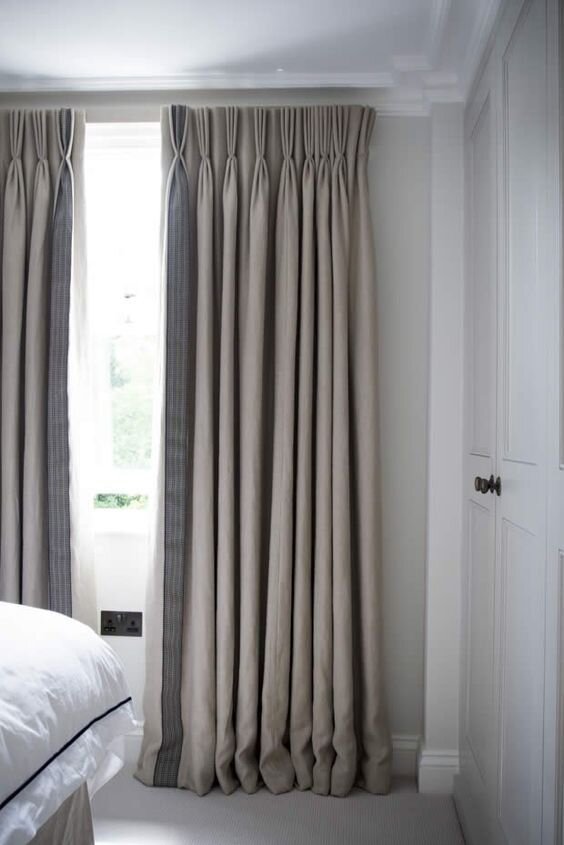
Images via Restoration Hardware & Prêt À Vivre
3. Pleated Curtains
Pleated curtains come and go as the trends do, but as of late, I’m seeing this look become more and more popular. This style has a very classic and slightly formal feel to it, giving it a timeless essence. But….these pleated curtains can tend to come at a hefty price.
If you like this style then it’s worth noting that there are a handful of different types of pleats out there. Some are simple looking, like the pinch pleat pictured above, and others are more intricate, like the goblet pleat, pencil pleat, cartridge pleat, box pleats, and a few others.
PROS OF PLEATED CURTAINS
- Elegant and tailored look: Pleated curtains have a classic, elegant look that can add a touch of sophistication to any room. They provide a more tailored look than rod pocket or tab top curtains.
- Fullness and depth: Pleated curtains are designed to create fullness and depth, which can make a room look more luxurious and well-appointed.
- Works well with medium to heavy fabrics: Pleated curtains work well with medium to heavy fabrics, such as velvet or silk, which can add texture and richness to a room.
- Many pleat styles to choose from: Pleated curtains come in many different styles of pleats. A few are pinch pleats, pencil pleats, box pleats, euro pleats, and inverted pleats.
CONS OF PLEATED CURTAINS
- More expensive: Pleated curtains require more fabric and typically require professional installation, which can make them more expensive than other types of curtains.
- More difficult to install: Pleated curtains can be more difficult to install than other types of curtains, as they require precise measurements and special hardware.
- Not ideal for lightweight fabrics: Pleated curtains may not work well with lightweight fabrics, as the pleats can make the fabric appear bulky and heavy.
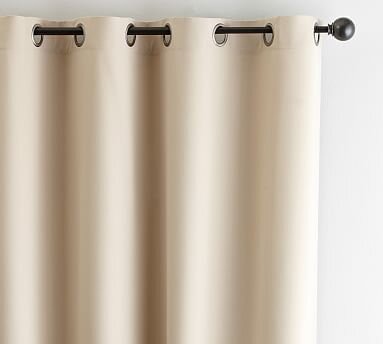
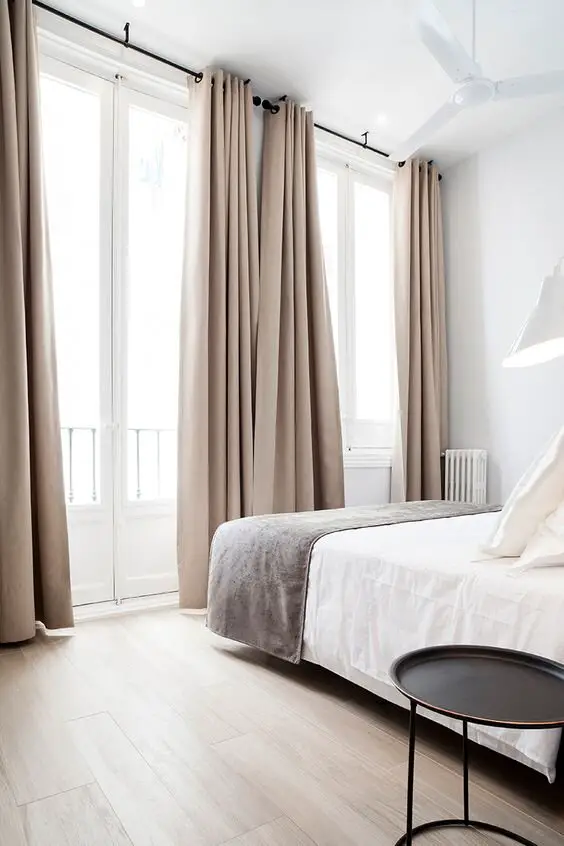
Images via Pottery Barn & AD
4. Grommet Curtains
Grommet curtains have large metal rings punched through the top of the panel, and that’s where the rod fits through. This look was popular starting in the early 2000s, and I sorta think it should stay there! But, before I shame this style…I will say that they are easy to slide across the rod and they do have a beautifully consistent ripple shape once they’re hung. But other than that, they aren’t my favorite choice.
PROS OF GROMMET CURTAINS
- Easy to slide: Grommet curtains slide easily along the curtain rod, making them easy to open and close.
- Works well with lightweight fabrics: Grommet curtains work well with lightweight fabrics, such as linen or cotton, that drape well and create a flowy effect.
- Provides better light control: Grommet curtains can be easily adjusted to control the amount of light entering a room.
- Easy to install: Grommet curtains are easy to install and do not require special hardware or expertise.
CONS OF GROMMET CURTAINS
- May not work well with heavy fabrics: Grommet curtains may not work well with heavy fabrics, as the grommets may not be able to support the weight of the fabric.
- Limited insulation: Grommet curtains may not provide as much insulation as other types of curtains, as the grommets create small holes that allow air to flow in and out of the room.
- Dated: If you’re going for a modern and contemporary look, these grommet-style curtains are going to make your space feel dated. Opt for a simple pleat or ripple fold instead.
SHOP GROMMET CURTAINS
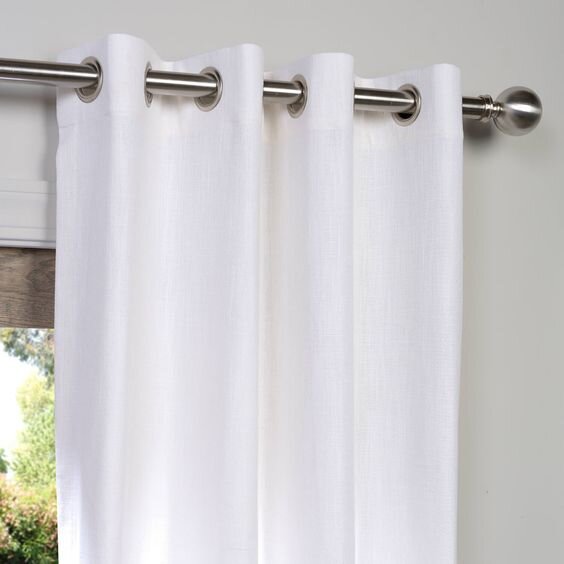
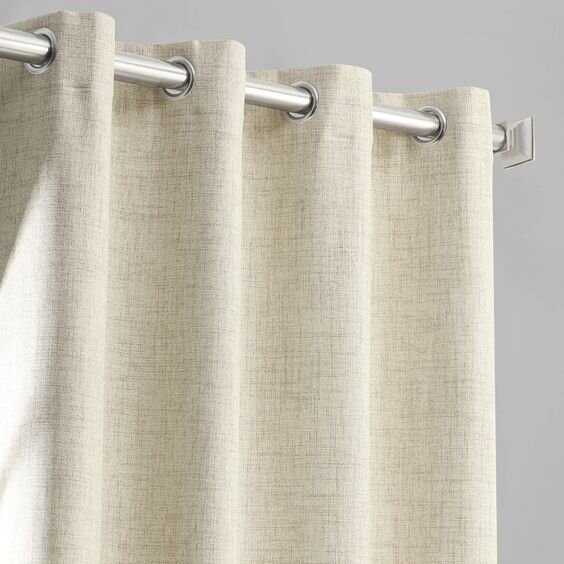
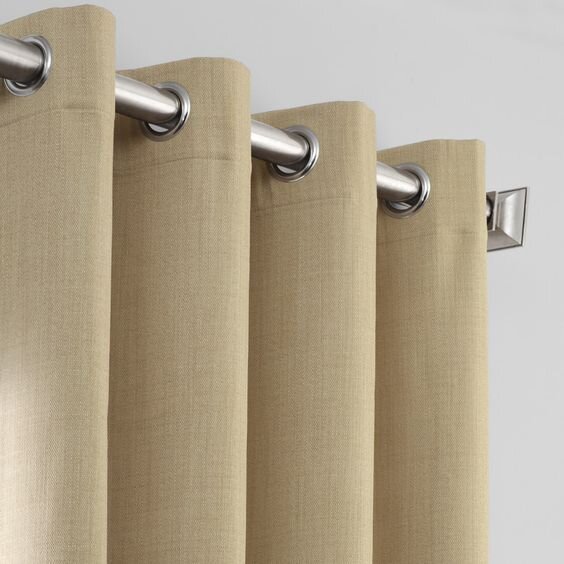
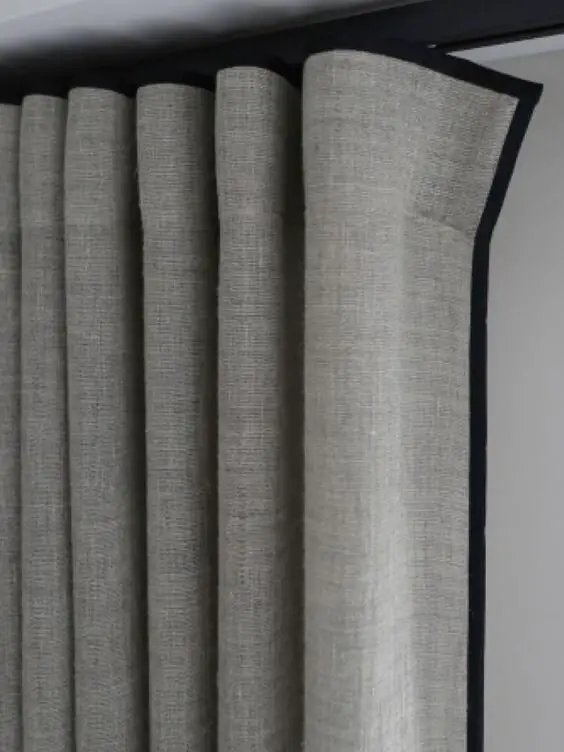
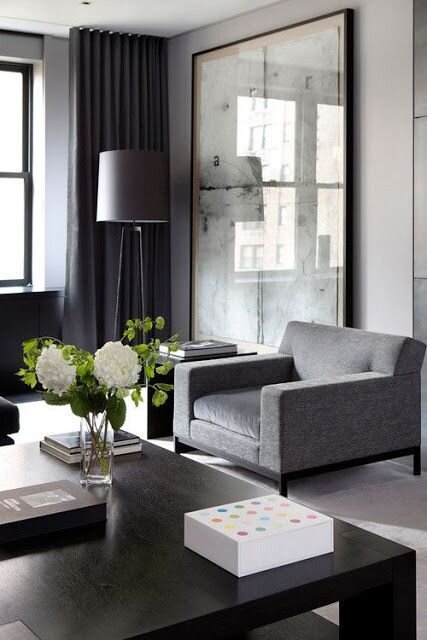
Images via Spiffy Spools & JWS Interiors
5. Ripplefold Curtains & Drapery
I’m saving the best for last here, because this one happens to be one of my personal favorites! It’s just so simple and clean looking! You can’t see the bulky hardware of the curtain rod, and it just looks effortless…staying in a perfect zig-zag shape. This is the perfect alternative to the grommet curtains because they looks similar but they aren’t as bulky and don’t give me a shower curtain vibe.
These drapes are usually custom, and it mostly has to do with a special track and hardware to perfectly space the ripples.
PROS OF RIPPLEFOLD CURTAINS
- Modern look: Ripplefold curtains have a sleek and modern look that can add a contemporary touch to any room.
- Provides a uniform appearance: Ripplefold curtains create a uniform appearance without bunching or sagging, even when fully closed.
- Provides better light control: Ripplefold curtains can be easily adjusted to control the amount of light entering a room.
- Works well with most fabrics: Ripplefold curtains work well with a variety of fabrics, including heavier fabrics that may not work well with other types of curtain headings.
- Easy to install: Ripplefold curtains are easy to install and do not require special hardware or expertise.
CONS OF RIPPLEFOLD CURTAINS
- May not work well with very lightweight fabrics: Ripplefold curtains may not work well with very lightweight fabrics that do not hold their shape well.
- May require specialized hardware: Ripplefold curtains require a special track system to be installed, which may require specialized hardware and expertise.
- May be more expensive: Ripplefold curtains may be more expensive than other types of curtains, due to the specialized hardware required.
I hope this post helped you figure out some of the different pros and cons of each curtain style! There are so many options out there, but in my opinion, only a couple of them will give you that designer-look and that’s pleated curtains or ripple-fold drapery. I’m working on perfecting that ripple-fold look for less, so stay tuned for a blog post in the next couple of months. Until then, what other questions do you have about curtains and drapes? Let me know in the comments below!
Cheers!
Good afternoon. Thanks for the helpful information on choosing curtains. Now I have definitely decided what type of curtains to hang in the living room)))
So glad it helped you decide! Best of luck with your living room!
The ripple fold which I assume is what I know as wave curtains can you use that heading for lined/interlined curtains
Hi. What do you think is the best curtain drapes for curtain coves? Thanks!
I like the plated curtains as they look neat but they are expensive as said. My other choice would be Ripple fold curtains as they look quite stylish.
We remodeled our home, finished a year ago. The window treatment is our final touch. We have decided to go with drapery/curtains but I struggle on the style. We have an idea of the fabric we’d like. Our biggest problem is we live in a remote area and there isn’t anyone that does custom drapery in our area. We would like to pull in a designer to help us but can’t get anyone to travel to us. I dislike grommet but it seems to be the only thing available in big box stores… which we wanted to stay away from. I’m worn out over this process and am considering throwing a blanket up in the window and calling it good.
You’ve chosen lovely lovely curtains. I think curtains add warmth and charm, especially in simple, pared back homes like yours. The pink for the hall would be lovely, with a nice thick interlining.
I’m making curtains for our new house, but as the roof isn’t finished and the house is gutted on the inside, I’ve got quite a wait. Meanwhile my lovely curtains (second-hand linen curtains from eBay, unpicked and washed with bleach to fade the print!) are stuck in a box in a garage, waiting to see the light of day. Your house gets lovelier every day
My Aunt and my Mom had a drapery business in the 80s. The ripple was the most popular with those who had more modern decor. Simple and classy. And yes the hardware was pricey but so worth it. Your work is beautiful.
Are ring drapes modern?
Are rings old fashion?
Thanks
Hi Terra,
Love this blog so much I’ve signed up to your Newsletter,
Oh my god this post was EVERYTHING I was searching for. New home owner looking for curtains and thought it would be such an easy task… wow was I wrong, so many variations and styles I felt so lost until I found this post. Thank you for sharing. I now know exactly what I’m looking for.
So happy I could help! Best of luck with your new home!!